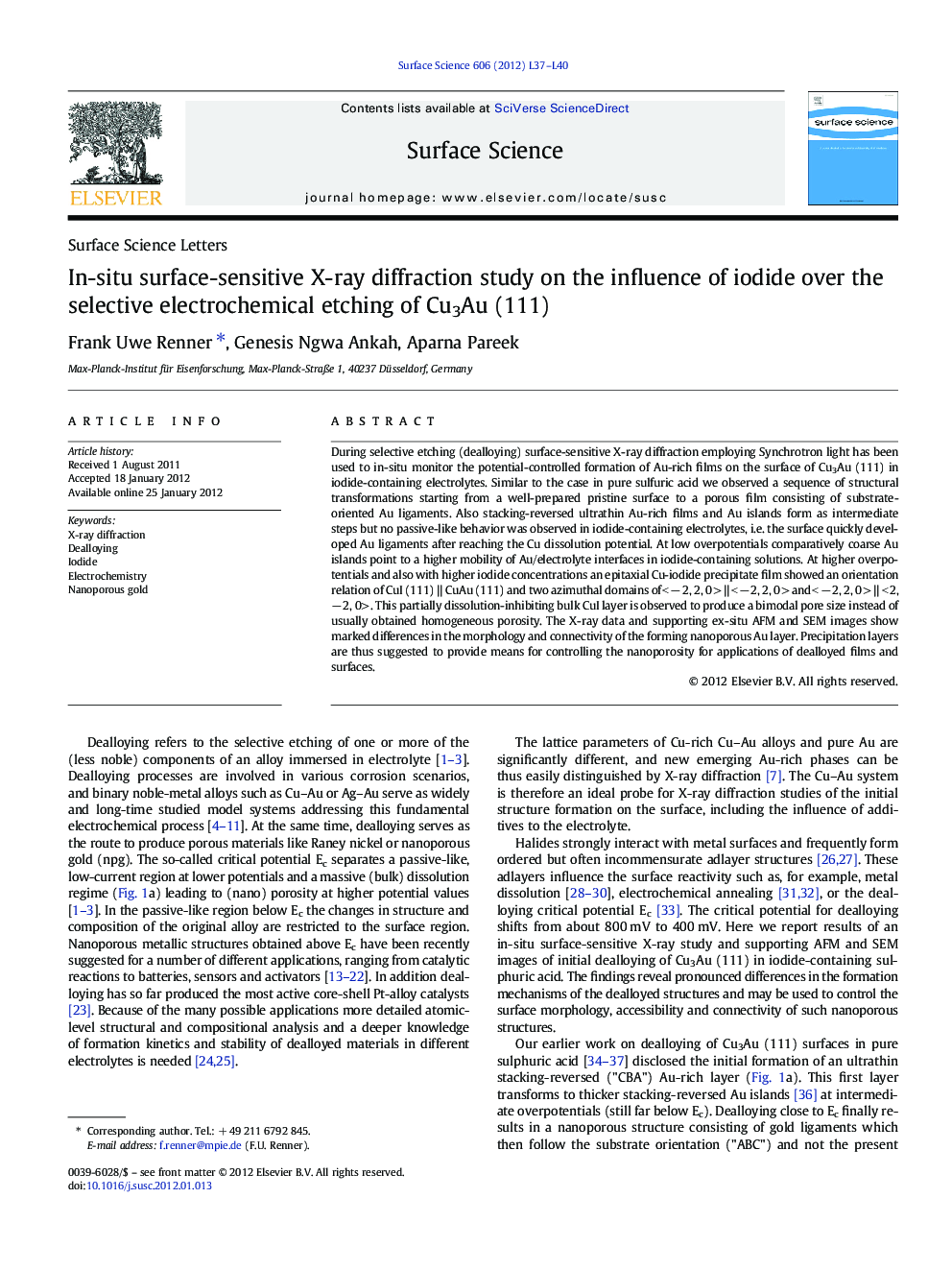| Article ID | Journal | Published Year | Pages | File Type |
|---|---|---|---|---|
| 5423182 | Surface Science | 2012 | 4 Pages |
During selective etching (dealloying) surface-sensitive X-ray diffraction employing Synchrotron light has been used to in-situ monitor the potential-controlled formation of Au-rich films on the surface of Cu3Au (111) in iodide-containing electrolytes. Similar to the case in pure sulfuric acid we observed a sequence of structural transformations starting from a well-prepared pristine surface to a porous film consisting of substrate-oriented Au ligaments. Also stacking-reversed ultrathin Au-rich films and Au islands form as intermediate steps but no passive-like behavior was observed in iodide-containing electrolytes, i.e. the surface quickly developed Au ligaments after reaching the Cu dissolution potential. At low overpotentials comparatively coarse Au islands point to a higher mobility of Au/electrolyte interfaces in iodide-containing solutions. At higher overpotentials and also with higher iodide concentrations an epitaxial Cu-iodide precipitate film showed an orientation relation of CuI (111) || CuAu (111) and two azimuthal domains of < â 2, 2, 0 > || < â 2, 2, 0 > and < â 2, 2, 0 > || < 2, â 2, 0>. This partially dissolution-inhibiting bulk CuI layer is observed to produce a bimodal pore size instead of usually obtained homogeneous porosity. The X-ray data and supporting ex-situ AFM and SEM images show marked differences in the morphology and connectivity of the forming nanoporous Au layer. Precipitation layers are thus suggested to provide means for controlling the nanoporosity for applications of dealloyed films and surfaces.
